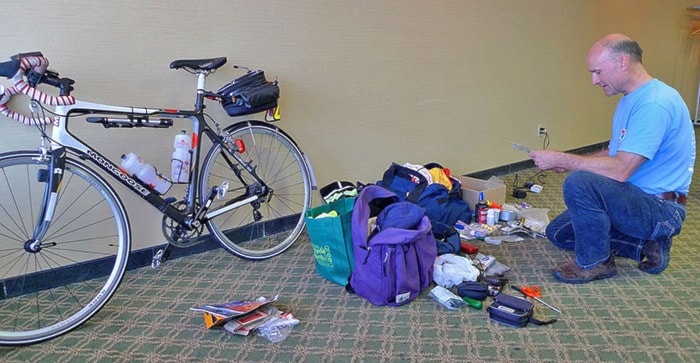Riding 1,200 kilometres in under 90 hours is not your average bike ride. But then again, randonneurs are not your average cyclists. Regularly covering 200 to 1,000 kilometres during organized rides called brevets, these riders are to cycling what ultramarathoners are to running.
“Cycling such a long distance, essentially non-stop, with only short breaks to eat and sleep, definitely challenges the body and the mind,” says Victoria cyclist Jim Runkel, who last rode 1,200 kilometres on his bicycle three years ago when he completed France’s iconic Paris-Brest-Paris brevet in 85 hours and 50 minutes.
Next week, Runkel will make his second attempt at the 1,200-kilometre distance, but this time closer to home, as one of 57 cyclists participating in the Van Isle 1200 hosted by the BC Randonneurs Cycling Club. Ranging in age from 22 to 71, these hardy cyclists will begin their ride on July 14 in Victoria at 3 a.m., following a pre-planned route designed so they never have to ride the same road twice in the same direction.
“Course designer Ken Bonner’s goal was to create a 1,200-kilometre route that would take riders end to end as well as across Vancouver Island,” says organizer Steve Mahovlic. ”The course has a six major climbs, and is somewhat isolated north and west of Campbell River. This makes it quite the challenge so community support for the riders will be greatly appreciated.”
After their early-morning start in Victoria, cyclists should crest the Malahat summit at sunrise before winding their way north and passing through Qualicum Beach and Comox on their way to Campbell River. From there, they will head west to Gold River before returning to Campbell River and cycling onwards to the northern turnaround at Port Hardy.
Each Van Isle rider needs to reach designated "checkpoints” within specified time limits and the entire ride must be completed in under 90 hours. Which will be a challenge since the route features 9,100 metres (30,000 feet) of total elevation gain. And there is also the risk of flat tires and “mechanicals.”
“Riders’ bicycles must be in excellent working condition since the northern 600 kilometres of the route travels through isolated wilderness,” says Mahovlic. “Self-sufficiency is a big part of randonneuring. In the same spirit, it will be the ‘Lanterne Rouge,’ the coveted last-place finisher, who will be recognized as getting the most out of the ride."
“At the end of the day, randonneuring is not a race,” says Runkel, “Covering 1,200 kilometres on your bicycle is so much more than that – it’s an amazing experience.”
– BC Randonneurs Cycling Club
